I’ve lived through more “surprise” updates than I care to count, and yeah, I still wake up at 3 a.m. to read patch notes with a bowl of cereal like a gremlin. The funny part? The big talk is always the same: dota 2 patch changes and meta shift. Boom.
There it is in the first paragraph like a ward on the high ground. We talk hero buffs and nerfs, weird item changes, map tweaks, power creep, drafting chaos, and the whole ranked grind exploding. In my experience, most people panic. They think a patch is a test. It’s not. It’s math plus habits plus people being stubborn. And those habits matter way more than you think.
So why do patches feel like an earthquake?
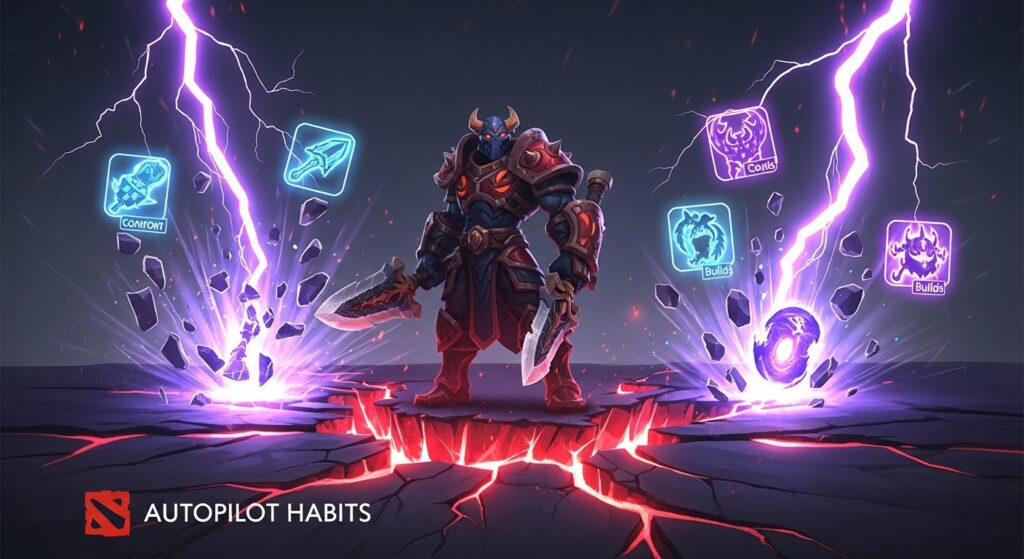
Because they kick your brain out of autopilot. In Dota 2, autopilot is comfy. You wake, you pick your two comfort heroes, you rush the same item timings, and you flame the offlane when your MMR dips. Then a balance patch drops. Suddenly your old build is bad. Your lane is weird. Your favorite hero feels like they’re moving through soup. I’ve watched it for a decade: people hold onto old habits while the game around them changes. That gap? That’s where you lose.
“Meta” means what people copy
Meta isn’t magic. It’s just the common strategy we all mimic because it wins today. That’s literally metagaming: playing the game outside the game. Seeing what pros do. Copying it. Pretending we knew it all along. When patches land, the meta shuffles. Not always due to direct buffs. Sometimes one item gets cheaper, which makes one hero spike faster, which makes one lane stronger, which makes five other heroes unplayable. Dominoes. Tiny pushes, big results.
What actually changes? Everything. But mostly four levers.
IceFrog pulls four big levers: items, heroes, map, economy. That’s the core. You don’t need to be a pro to read patterns. You just need to stop playing yesterday’s game.
Items: small numbers, big pain
Items are sneaky. A 200 gold cost change can flip an entire role. I still remember when a tiny buff to a mana item turned support rotations into nightmares. I bought two, spammed spells, felt like a god. Then the nerf hit and I went back to feeling mortal. In my experience, if your favorite hero feels off, check item changes first. Then cry. Then adapt.
Heroes: buff here, nerf there, everything shifts
Sometimes the patch slaps your main. Sometimes it secretly buffs them. Often it’s indirect. Your counter gets nerfed? Congrats, you got buffed. Your lane partner got changed? Your timing window opens or closes. It’s like musical chairs, but with daggers.
Map: your paths and wards are now wrong
Map changes mess with how you walk, ward, and fight. If camps move, or high grounds shift, your ganks whiff. You ward old spots. You die a lot. Every patch I rebuild my mental map: pull spots, juke trees, Roshan timings, outpost fights. Miss one of those and you throw. It’s that simple.
Economy: XP and gold rubber bands
Even tiny XP tweaks change who hits level six first. Gold bounties get tuned? Suddenly support rotations feed cores faster. Remember the wild rubber band years? I watched teams feed twice, win one huge fight, and leap ahead like they had a secret bank loan. Economy changes are the heart rate monitor of the game.
Quick table: How the levers hit your pubs
| Lever | Common Patch Change | What It Does To You | Simple Fix That Actually Works |
|---|---|---|---|
| Items | Cost +200 / -200, stats tweak | Your timing is late or early; fights feel off | Shift one component earlier; buy small value items |
| Heroes | Spell damage +10%; cooldown +2s | Trade patterns change; kill windows move | Relearn level 3 and level 5 trades in a lobby |
| Map | Camps moved; ramps reworked | Rotations fail; wards useless | Custom game walkaround; rebuild ward habits |
| Economy | XP bounty nerf; kill streak buff | Comebacks swing harder or softer | Track streaks; take fights near power runes |
How I adapt after a patch (and how you can copy it)
Look, I’m not special. I just have a boring routine. I do it after every update. It keeps me sane while the meta shakes. If you want my “secret,” it’s not glamorous. It’s a few habits, done over and over, while everyone else argues in all chat.
Day 1: Triage
- I read patch notes once fast. No theorycraft. Just vibes.
- I write a dumb list: “Winners,” “Losers,” “Weird.” That third one matters.
- Then I go unranked. Two hours max. I try one buffed hero, one item rework, one ward spot.
- I don’t chase MMR on day one. Ever. That’s how you tilt out.
Week 1: Build a test pool
- Pick five heroes. Not ten. Five. Two comfort, two patch winners, one curveball.
- Run the same opening every game. Same first items. Same lane plan. Keep it simple.
- Watch two pro replays. One for your role, one for a hero you hate playing against.
- Track early timing windows: level 6, first big item, first smoke.
If you want the boring truth on why this works, I wrote more about it here: the boring system that wins games. It’s not sexy, but it turns chaos into a checklist. And checklists beat panic, especially when the pub meta is weird.
Month 1: Stabilize
- Drop the worst hero from your pool. Replace with one that beats the new bullies.
- Refine ward spots. Note which ones survive sentries the longest.
- Adjust farm patterns to the new camps and bounty runes.
- Lock one build per hero. Don’t reinvent mid-game unless you must.
Patch history that taught me stuff (the hard way)
When talents exploded the game
Remember when talents arrived? Overnight, late-game power spiked. I watched supports outscale mids because they hit level 25 with dumb talents. It taught me to respect level-based spikes. If XP changes in a patch, I care more about stacking camps and less about chasing kills. Levels are economy too.
Rubber band yo-yo years
There was a stretch where kill streaks and comeback gold were wild. I fed twice as offlane, then we wiped them once and suddenly I had a full item. It made teams play with brakes on. Fight, then stop, then farm. If I see economy changes like that, I call for disciplined fights. One fight, not three. Stack wins. Don’t feed streaks.
Neutral items changed everything
When neutral items landed, I felt like Christmas. Free stats, free procs, chaos. It also added a new layer: farm “zones” for neutrals. On patch weeks, I now decide who gets which tier early. This is underrated. If your carry needs a specific neutral to hit a timing, you herd them into those camps. And you protect them. Like a shepherd with a very greedy sheep.
The big map patches
Big map expansions stretched supports thin. It made vision and smoke timings way harder. People still played like the map was small. They died crossing rivers alone. In my games, I set “lanes we ignore” and “lanes we protect.” That keeps us from bleeding on the wrong side of the map. If map size grows, you win by picking your side, not by chasing every creep wave like a dog at a park.
Drafting in a fresh meta: keep it simple
I’ve drafted in stacks for years. I’ve learned the same rule over and over: grab stable lanes first. Don’t chase meme counters until you know if your lanes live. New patches make lane damage and regen math shift. A tiny nerf to base damage can flip a lane from “bully” to “even.” So I draft for lane survivors and easy wave clear on day one. Then I add spice later.
Lane basics I keep in my head
- Range creep is life. Control it, you control the lane.
- Cheap regen beats greedy items early in fresh patches.
- Kill threat matters more when people don’t know damage numbers yet.
- Shove the wave before runes. Force TP reactions. Free info.
Mid-game calls that actually win
- Fight near your next item spike. Not theirs. If your carry needs 800 gold, stall.
- Smoke after a big enemy spell is on cooldown. Don’t brawl into five ults, please.
- Put wards where you want to fight, not where you fear they are.
- If you’re ahead, force objectives that require them to group. If you’re behind, split the map and trade.
A very honest table: Winners and losers after a typical patch
Every patch has heroes that “feel” better even without direct buffs. Here’s how I predict it on day one.
| Change Type | Who Usually Wins | Who Usually Suffers | Why |
|---|---|---|---|
| Mana regen items cheaper | Spam casters, lane bullies | Greedy cores with long cooldowns | Early pressure ramps up; greedy heroes get choked |
| Jungle camps reduced | Fighters, skirmish mids | AFK farmers, slow carries | Less free farm, more brawling |
| XP gain increased | Supports with level 6 power spikes | Late-game-only picks | Earlier ults = earlier moves |
| Armor on towers nerfed | Deathball lineups, zoo strats | Split pushers who need time | Easier early objectives snowball games |
| Roshan tweaks (earlier, weaker) | Teams with early Rosh kits | Slow lineups without pit control | Aegis arrives before you’re ready |
Okay but what do I pick right now?
Short answer: don’t overcomplicate it. Pick heroes that do three things: win lanes, clear waves, hit one reliable timing. In fresh patches, the team with the first real item spike usually wins. You don’t need galaxy brain drafting. Just reliability. And a support that buys detection. I will die on this hill.
Role-by-role sanity checks
- Pos 1 (carry): Ask, “What is my 12-minute item?” If the answer is “three small things,” you’re fine. If it’s “I need 3k gold more,” rethink it.
- Pos 2 (mid): Play to runes. Every patch. Secure them, or bottle is a trap.
- Pos 3 (offlane): Pick lane winners or aura bots. No middle ground in week one.
- Pos 4 (roaming): Don’t gank empty lanes. Stack, poke, pressure. Build cheap value.
- Pos 5 (hard support): Communicate pulls. Pulls change with camp tweaks. Fix the creep equilibrium, save the game.
Why some people adapt faster (and how to be one of them)
The ones who adapt are boring. They’re not smarter. They just experiment fast and reset their bad habits. They don’t cling to old builds. They test damage in demo mode. They try three ward spots and keep the one that actually survives. If that sounds dull, it is. But it wins.
I’ve always found that setting tiny goals per session helps: “Practice new stack timing twice,” “Test one hero I don’t play,” “Replace my first wards.” That’s it. Rinse, repeat. It’s not a grand plan. It’s just me refusing to be the person still buying last patch’s bad items because my favorite streamer did it in 2022.
How the pro scene shifts your pubs
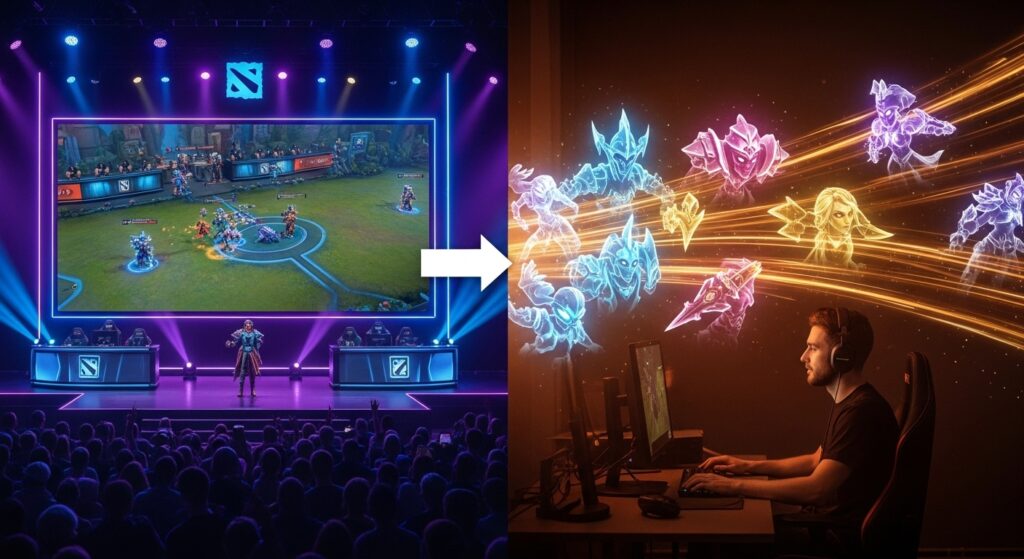
Pros play a different game—discipline, vision, smoke timing, ideal communication—but their habits leak into pubs after two weeks. If a hero shows up in a grand final and wins three times, count on your games being flooded with it. It doesn’t matter if it actually fits your bracket. People will copy. That’s fine. You can prep for it. Build one counter for each hype hero and you’ll farm MMR quietly while everyone chases last night’s draft trend.
Watching replays without falling asleep
- Skip to minute 8 and 20. Those are the first big rotation and the first big fight.
- Check ward spots and smoke paths. Copy one. Just one.
- Watch the losing team. See how they lose. Don’t copy that.
When everything feels off: the reset plan
I get it. Sometimes a new patch makes you feel like a bot. Your combo fails. Your timing is late. Your ranked grind is on fire. When I hit that wall, here’s my two-day reset:
- Two unranked games on your safest hero. Not to win, to feel damage and regen.
- One hour of demo mode: test item orders; write down the fastest way to your first timing.
- Play a support game. Vision resets your brain. You’ll see fights earlier.
- Take a walk. I’m serious. Patches make you stubborn. Fresh air cures stubborn.
My simple rules for any patch week
- Don’t all-in ranked on day one. You’re flipping coins.
- Plan one power spike per hero. Name it before the horn.
- Keep a tiny hero pool. Five heroes > twelve confused ones.
- Ward for fights you want, not for fear ghosts.
- If you win two fast, stop. Bank the MMR. Don’t feed tilt.
The phrase we whisper but hate admitting
Sometimes the people who climb after a patch aren’t even playing better. They’re just playing simpler. Less noise. Fewer “what if” builds. Clear plan. That’s the whole trick. Play the patch you have, not the one you loved last month. I know, it hurts.
Little patch quirks I always check
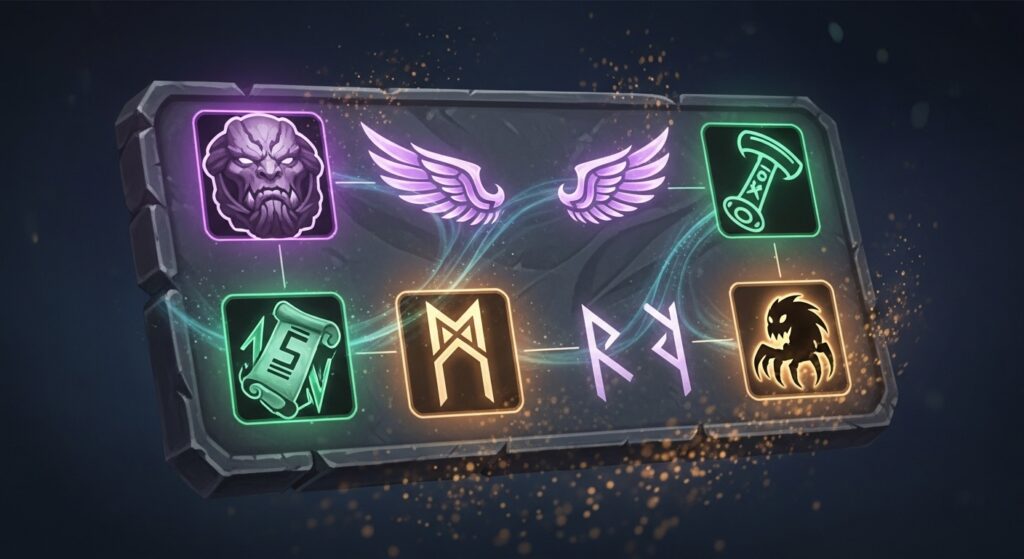
- Roshan timers and drops. If cheese is earlier, push earlier.
- Courier speed and vision. Courier snipes are a real win condition in some patches.
- TP cooldown and cost. A longer TP changes how you defend tier twos.
- Rune behavior. Water, wisdom, bounty—tiny numbers, big moves.
- Spell creep aggro rules. If they change, your trades change.
Reading the room (aka your bracket)
What works at 8k MMR may not work at 2k. In lower brackets, raw fight power and wave clear win more than delicate split push. In higher brackets, map play and smoke timing matter more. So when a patch drops, I ask: “What will my bracket copy first?” Usually it’s the loudest hero. I prep a counter and wait. Free wins arrive because everyone else learned the wrong lesson.
One last thing about the words everyone repeats
We love to chant “dota 2 patch changes and meta shift” like it’s a spell. It isn’t. It’s just a reminder to change your habits before the game changes you. And hey, if you hate change, that’s fine. Play Turbo. Build five rapiers. Send me the replay when it works.
FAQs
- Is it worth spamming one hero right after a patch? Yeah, if that hero still hits a clean timing. If all their items got worse, pick a backup. Don’t force it.
- How fast should I learn the “new meta” builds? Slowly. Copy one pro build and test it. If it feels bad at minute 10, fix the first two items, not the whole tree.
- Are patch notes lying to me? The numbers are true; the impact is sneaky. A tiny change can matter more than a big one. Test in demo, then judge.
- Do I chase kills or farm early in a new patch? Depends on economy changes. If XP is up, fight more for level 6. If jungle is nerfed, fight for lanes. Read the levers.
- How do I stop tilting when my old builds fail? Two unranked games, one demo session, one walk. Then queue ranked. Works better than flaming your pos 4.
Anyway. That’s my brain dump. I’ll be in demo mode, testing ward spots and pretending I didn’t just feed mid to a hero that got +2 base damage. Again.

John | Your source for Esports, Battle Royale, Role-Playing, Retro Games, and Gaming Gear. Let’s Enjoy!

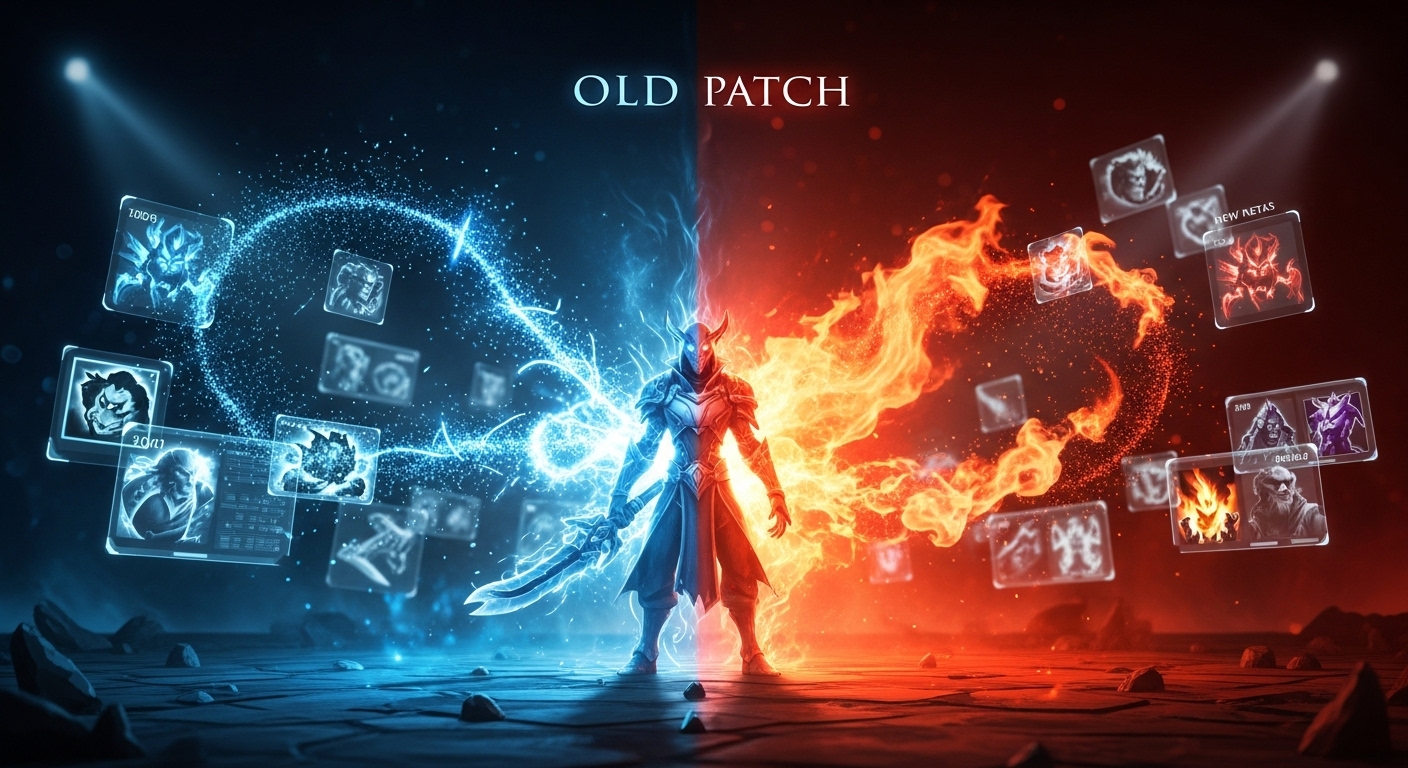
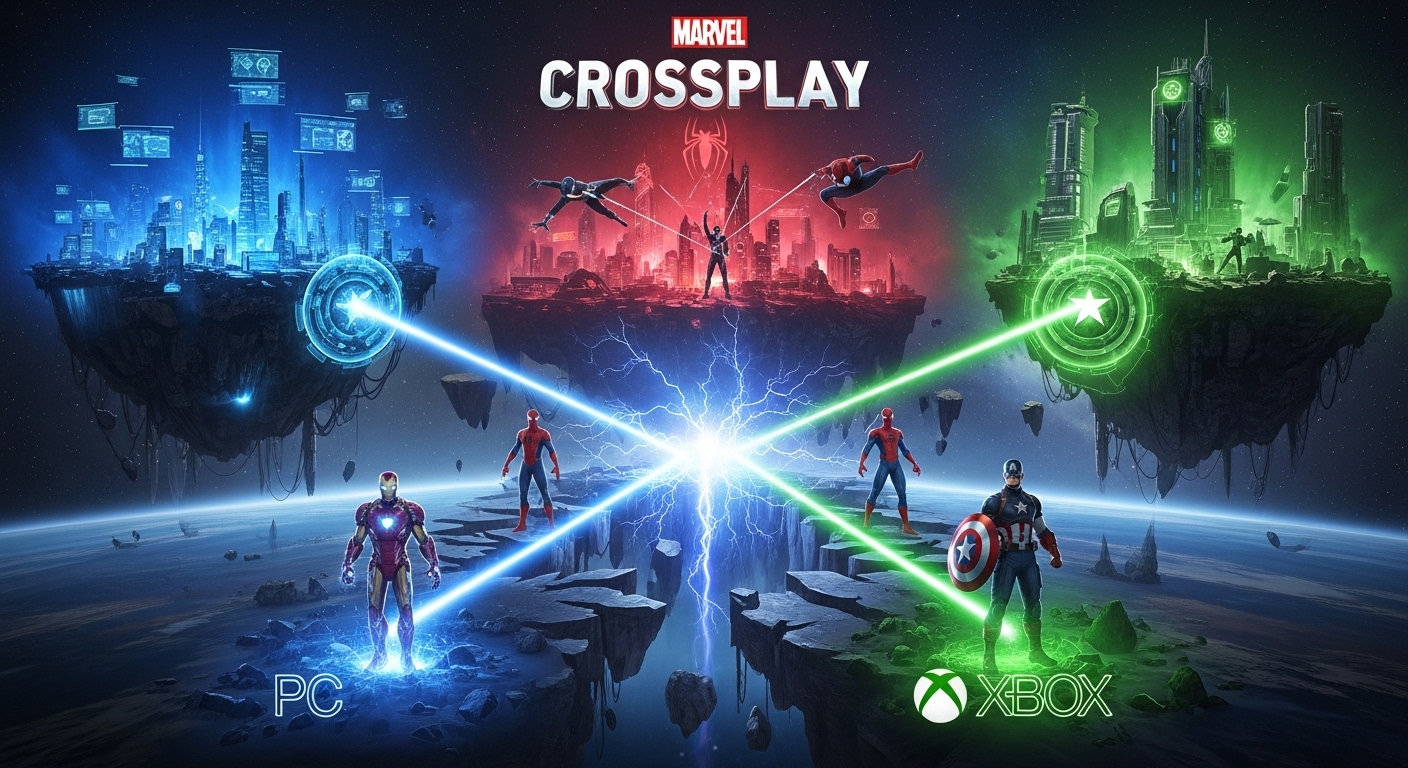

Picking the right heroes post-patch could mean the difference between victory and defeat. Adapt or perish!
Patches shake things up but habits matter. Adapt or lose in the ever-changing Dota 2 meta-game.
Patching can feel like an earthquake, but adapting is the key to success in Dota 2 meta shifts. Keep moving forward!
Patches shake up the game, but adapting is key. Analyzing trends will keep you on top.
Patches keep the game fresh, forcing players to adapt and grow. Stagnation leads to defeat. Embrace the change!
Patches are like a game within the game, adapt or fall behind – it’s all about evolving strategies.
Patches are the game’s wakeup call to break autopilot habits and adapt to the ever-changing meta.
Patches shake up autopilot habits – adapt or fall behind in Dota 2 meta. Watch out for item changes!
What’s your go-to strategy for adapting to map changes in Dota 2 post-patch?